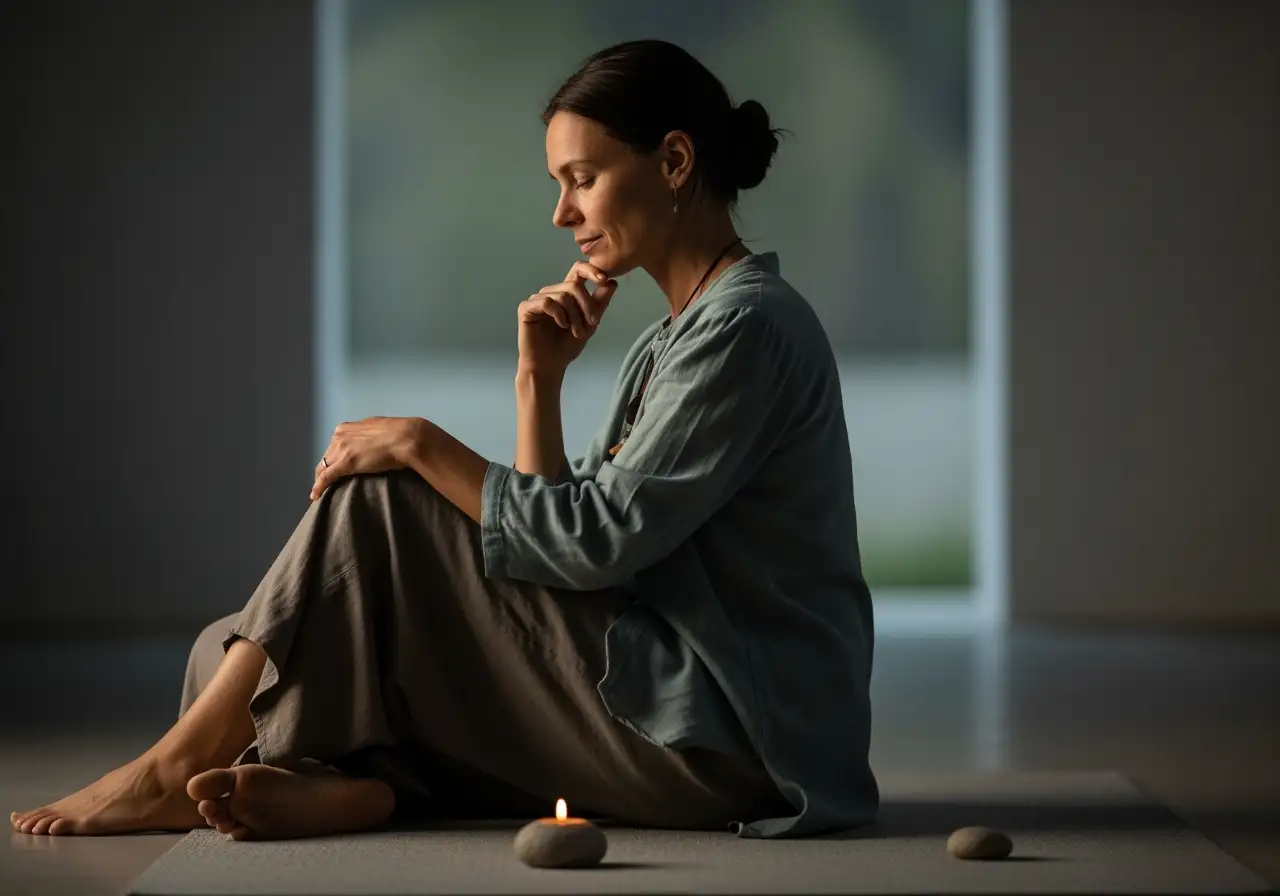Unlocking Cognitive Superposition for Deeper Mindfulness
Unlocking Cognitive Superposition for Deeper Mindfulness
Have you ever walked into a new situation, like a room full of strangers, and felt a multitude of possible selves existing within you simultaneously? Perhaps the confident conversationalist, the quiet observer, or even the anxious wallflower? Before you even utter a word or make a move, all these potential versions of you are, in a sense, present. This isn’t just a fleeting thought; it’s a profound insight into a revolutionary concept within the Quantum Mindfulness framework: the mental wave function and cognitive superposition.
Traditional psychology often views our mental states as linear, predictable reactions to past experiences or external stimuli. We think of our thoughts and emotions as distinct, one-after-another events, as if the mind were a deterministic machine. But what if your mind is far more dynamic, operating like a quantum field where countless possibilities coexist at any given moment? This is the core idea behind the mental wave function: it describes the entire spectrum of potential thoughts, feelings, and perceptions a person could experience at any point in time. These potentials are not yet definite; they exist in a state of flux, awaiting resolution.
Within this rich, vibrant field, these multiple potential states exist simultaneously – a phenomenon we call cognitive superposition. Imagine a major life decision, like accepting a job offer in a distant city. You don’t just jump from uncertainty to certainty. Instead, in the quantum realm of your mind, you are simultaneously experiencing the version of you thriving in the new city, the version regretting lost connections, the version discovering new opportunities, and the version struggling with adaptation. These aren’t just abstract ideas; they are deeply felt, imagined possibilities, all present in your mental wave function, each representing a distinct psychodynamic dimension of your potential experience.
This concept radically redefines our understanding of consciousness. It posits that your mind isn’t merely a passive recipient of experiences, but an active, creative force constantly generating new possibilities. This is the essence of the Observer-Participant Dynamic. Your morning mood, for instance, isn’t solely dictated by how you slept, nor is it a fixed outcome. The kind of attention you bring to waking up – whether you immediately worry, embrace gratitude, or simply allow yourself to be present – actively shapes the cognitive appraisal of your initial observation. This appraisal, influenced by your personal tendency and the inertia of the past, then guides the psychodynamic collapse of your mental wave function, creating different emotional paths for your day. The mental wave function isn’t a fixed menu; it’s a dynamic canvas continually being painted by your conscious intention.
The relevance of this to mindfulness is immense. Traditional mindfulness, often referred to as classical mindfulness, teaches us to observe our thoughts and feelings after they have already solidified. We accept that “I am feeling anxious” or “I am having angry thoughts,” cultivating a non-reactive observation. But Quantum Mindfulness takes this further. It invites us to engage with the process of consciousness itself – the vibrant probabilistic field from which specific experiences emerge. Instead of just observing the result (the collapsed state), we learn to understand and interact with the potential before it collapses.
The mechanism by which these potentials become reality is known as psychodynamic wave collapse. This fundamental transition is triggered by conscious attention, which acts as the collapse vector. When you direct your attention, you are actively participating in the process of dimensional crystallization, solidifying a particular possibility from the cognitive superposition. This highlights the profound impact of your Psycho-Volitional Dimension (Pd1), the source of primal will and intentional action, which has primacy over other psychodynamic dimensions in initiating this collapse.
Without conscious intervention, the mind often defaults to unconscious reactive collapse, where ingrained patterns, inherited scripts, or external influences dictate which possibilities actualize. This can lead to psychological disharmony, such as unresolved superposition consequence, where the mind remains stuck in a state of cognitive strain and dysfunction.
Quantum Mindfulness, however, offers a path to intentional collapse. This involves cultivating practices such as perceptual shaping techniques and strategic attention management. By engaging your Psycho-Meditative Dimension (Pd3), the seat of analytical reasoning and structured understanding, you can learn to skillfully navigate the cognitive emergence field. This enables you to make deliberate choices about which potential realities you wish to actualize, fostering a profound sense of cognitive agency.
Consider a challenging conversation. In cognitive superposition, you might hold potentials for anger, frustration, understanding, or even creative resolution. Classical mindfulness might advise you to observe the anger without judgment. Quantum Mindfulness, however, encourages you to intervene before the anger fully collapses into your experienced reality. By consciously shifting your focus, leveraging your Psycho-Receptive Dimension (Pd8) for feedback integration and the Psycho-Aesthetic Dimension (Pd6) for harmonizing conflicting energies, you can guide the psychodynamic collapse towards a more constructive outcome. This is an active mastery over your internal landscape, moving beyond mere passive observation to conscious reality construction.
By grasping the concept of cognitive superposition, you begin to see that your current reality, no matter how fixed it feels, is just one of many possibilities that could have emerged from your mental wave function. This understanding opens up a powerful question for daily life: How can recognizing your mind as a field of infinite possibilities transform your approach to challenging situations and empower your choices? It leads to a profound shift from being a spectator of your thoughts to becoming an architect of your experience, fostering mental flexibility and ultimately, perceptual freedom. This ongoing practice of conscious observation and intentional collapse is not just about feeling better; it’s about fundamentally reshaping your belief formation and cultivating a life aligned with your highest potential.






